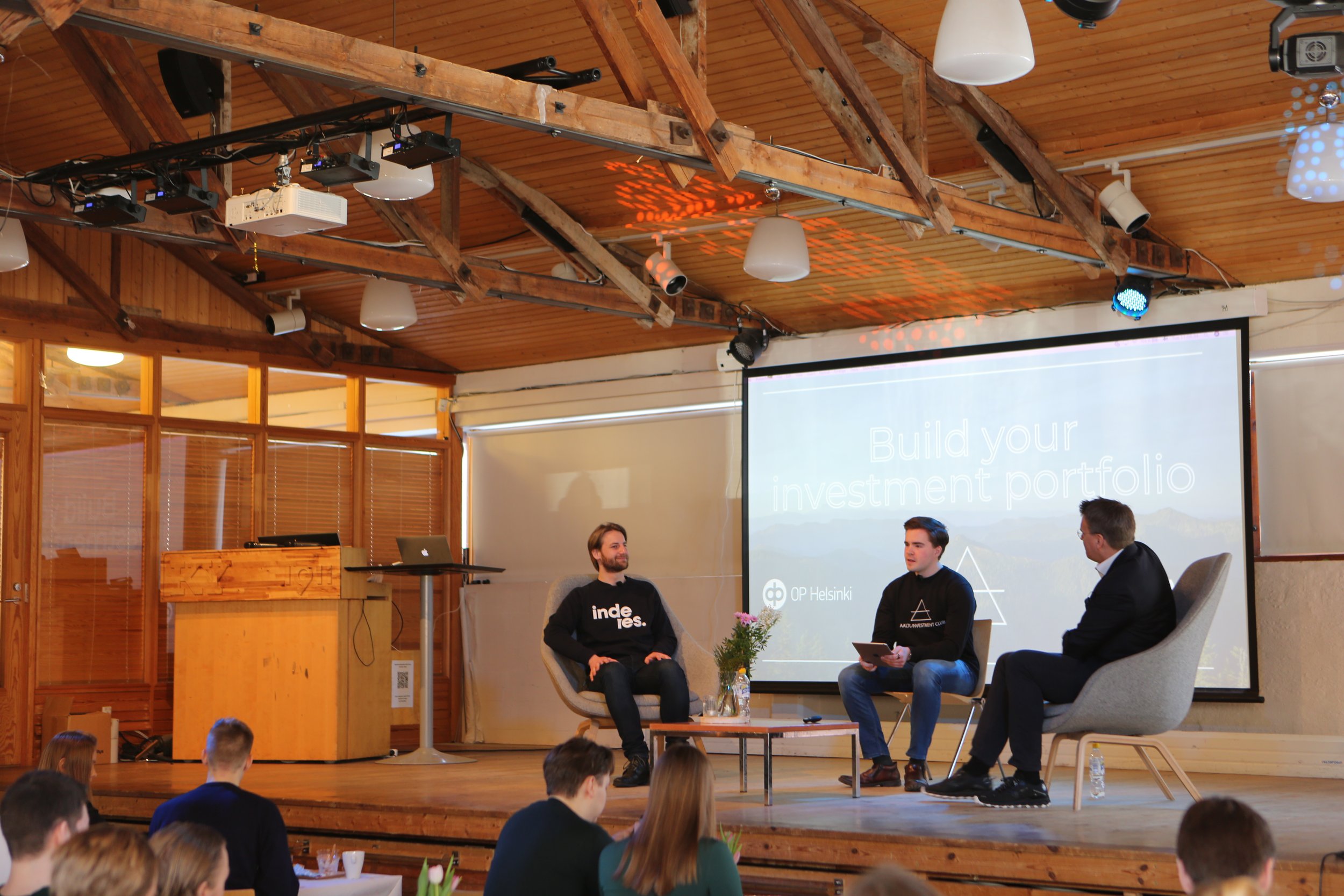BUILD YOUR INVESTMENT PORTFOLIO -BRUNCH EVENT
Click here for the post in Finnish.
Aalto Investment Club’s first event of 2022 “Build your investment portfolio” -brunch was on Tuesday 1st of March. Our guest speakers Verneri Pulkkinen and Martin Paasi both delivered keynote speeches and participated in an interactive panel discussion. In this blog post, we have gathered the main takeaways from our speakers’ presentations, so, in case you missed the event or would like to refresh your memory, you’re in the right place! You can also watch the presentations, as well as the panel discussion from the videos in this post. Note that the videos are in Finnish.
According to Verneri Pulkkinen, there are as many kinds of investment portfolios as there are investors and one can learn the best way only by trying. Everything starts from one’s interests – if sustainability is close to your heart, you can choose your assets accordingly, or you can just for example buy your favorite brand’s stocks. Value investor invests in undermined companies, whose value they think is going to be fixed upwards, and a growth investor invests in potentially growing companies. Whatever your style is, the goal is to buy something cheaper than its actual value is. However, you should look before you leap and start with small amounts of money. A plan helps you to build your investment portfolio, which should contain things such as;
-Why am I investing
-To which assets am I investing
-On a what timeframe
-How much money can I spare for stocks
“The benefits of investing in stocks can be seen in the long run, because stocks are one of the best profiting asset classes”
Verneri’s presentation focused mainly on investing in stocks, which he jokingly called “stonks”. The benefits of investing in stocks can be seen in the long run, because stocks are one of the best profiting asset classes. It is unlikely that a well-diversified portfolio doesn’t make a profit, and diversification is also a way to decrease the risk of investing. What this means is that you shouldn’t put all your money in one company’s stocks, on the contrary, you should find multiple companies of which stocks you buy. Another way to diversify is time diversification, which means that you shouldn’t empty your whole bank account at once, rather, you should make smaller buys over time.
One of the most important lessons from Verneri was that investing itself is not difficult – you just have to open an account in a bank or other investment platform and put money in to work for yourself. Investing, however, requires “curiosity, buttocks, good nerves, emotion control, self-knowledge, and capability of handling risks”. If stock-picking seems too time-consuming or challenging, you can also invest in ETFs, exchange-traded funds. Thanks to ETFs, you don’t have to use time in finding suitable companies, as the work has been done for you. So, there should be an appropriate way for everyone to invest in stocks! According to Verneri, the only risk regarding investing is not investing in stocks!
In Martin Paasi’s speech the focus was on the three most important things related to investing; starting investing and compound interest, minimizing expenses, and long-term investing.
It is always worth it to start investing, and the sooner the better. When investing long-term, annual interests start profiting on top of the initial capital. So, if you invest 50 euros, and the annual interest is 7 %, next year you’ll have 53,5 euros on your account. The following year your initial capital of 50 euros and last years’ interest of 3,50 euros both make a profit! Naturally, the longer you save, the stronger the compound interest effect is. You can try and count from your current portfolio or plan how much profit you could make with compound interest in ten years.
“It is important to consider how big or small of a buy is reasonable.”
Minimizing expenses is all about checking all the costs related to investing. Banks’ book-entry accounts might have maintenance or storage costs that you should be aware of before opening an account – nobody wants their profits to end up to the bank instead of your own pockets. The same applies to different funds and their administration fees. Besides that, you should take all transaction costs into account, as it wouldn’t make sense to spend a major part of a 50-euro stock buy in transaction costs. Thus, it is important to consider how big or small of a buy is reasonable.
Divisions mentioned above are part of long-term investing, and being able to invest long-term, according to Martin, is the only thing in between you and becoming wealthy. Investing long-term might be challenging if you seek to see results quickly. Martin especially emphasized that investing in stocks long-term is worthwhile, as, in 200 years, stocks are the only ones that have made a clear linear rise. So, why wouldn’t you invest in stocks?
You can watch the interactive panel discussion from the video below.



